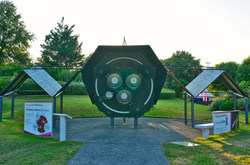Students open a new window into the universe
Globular clusters play a crucial role in stellar astrophysics and cosmology. The study of these spherical concentrations of stars and their content provides insights into various astrophysical processes and systems ranging from stellar structure, evolution and dynamics, to galaxy formation. Scientists at the National Institute for Astrophysics in Milan and a group of students from a school in Saronno revealed a peculiar X-ray source in the vast archive of the European Space Agency’s (ESA’s) XMM-Newton X-ray observatory. The research was supported by the EU-funded EXTRAS project. The findings were published recently in the ‘Astronomy & Astrophysics’ journal. Stars can emit flares of intense X-ray radiation. The X-ray Multi-Mirror Mission (XMM) Newton was launched in 1999 to investigate the X-ray emission characteristics of cosmic sources such as clusters of galaxies, active galaxy nuclei, black holes, neutron stars and pulsars. For nearly two decades, XMM-Newton telescope has probed the X-ray universe, hunting for missing matter and examining the bright centres of galaxies. Quoted in a press release by ESA, Andrea De Luca, one of the scientists who coordinated the student project, said: “We recently published the EXTraS catalogue, which includes all the X-ray sources – about half a million – whose brightness changes over time as observed by XMM-Newton, and lists several observed parameters for each source.” De Luca added: “The next step was to delve into this vast data set and find potentially interesting sources, and we thought this would be an exciting challenge for a student internship.” The pupils analysed about 200 X-ray sources and looked at their light curve – a graph showing the object’s variability over time, according to the press release. They also checked the scientific literature to verify whether or not they had already been studied. They later identified a handful of X-ray sources that exhibit “interesting properties – a powerful flare, for example – that had not been previously reported by other studies.” One, in particular, stood out. Featuring the shortest flare of all analysed objects, the source “appears to be located in the globular cluster NGC 6540 – a dense grouping of stars – and had not been studied before.” X-ray outbursts In the journal article, the researchers concluded: “The variable source J1806–27, most likely located in the Galactic globular cluster NGC 6540, was discovered thanks to the emission of a brief X-ray flare during a systematic search for variability in archival XMM-Newton data.” Journal lead author Sandro Mereghetti explained in the press release: “This event is challenging our understanding of X-ray outbursts: too short to be an ordinary stellar flare, but too faint to be linked to a compact object.” Mereghetti also said “[t]he systematic study of variability that led to the compilation of the EXTraS catalogue, together with this first attempt at data mining, suggests that we have opened a new, unexplored window on the X-ray Universe.” The EXTRAS (Exploring the X-ray Transient and variable Sky) project, which ended in 2017, was launched to explore and characterise variable sources in the soft X-ray range. It involved analysing reams of information collected by the European Photon Imaging Camera on board the XMM-Newton mission. For more information, please see: EXTRAS project website
Countries
Italy



